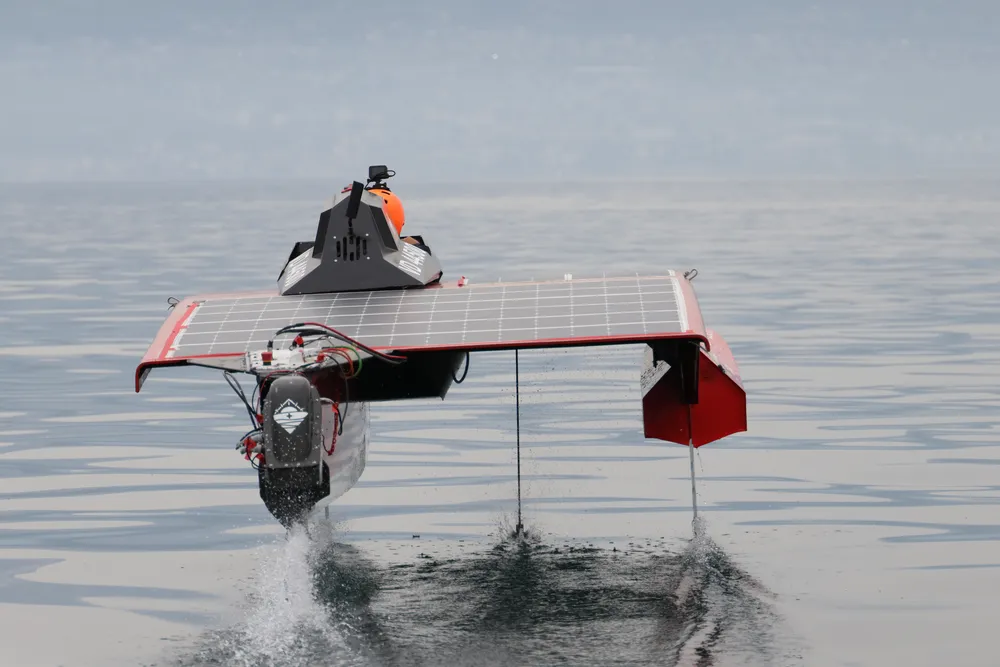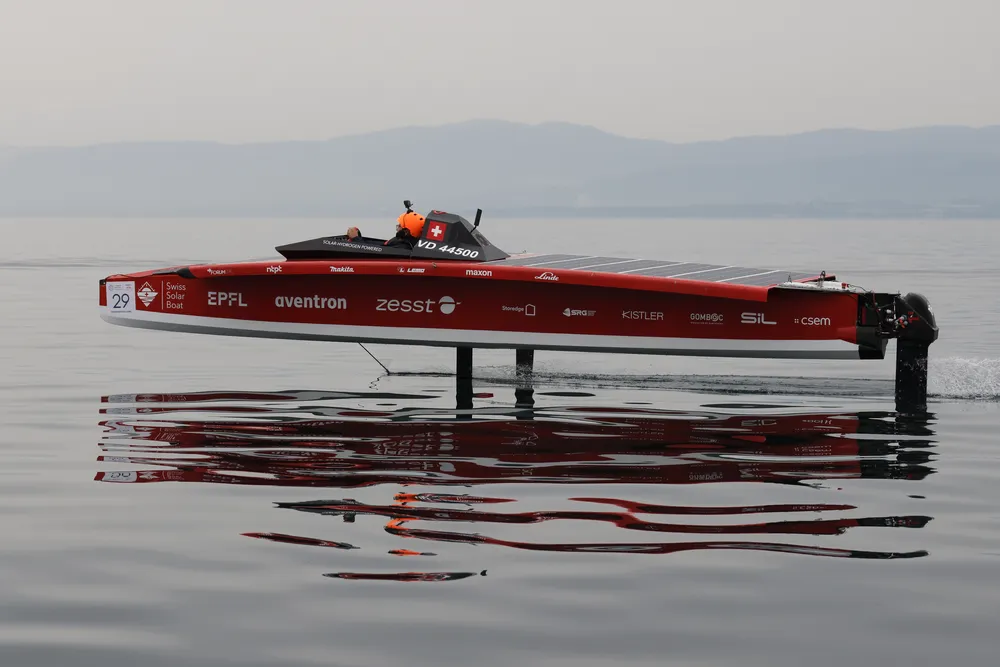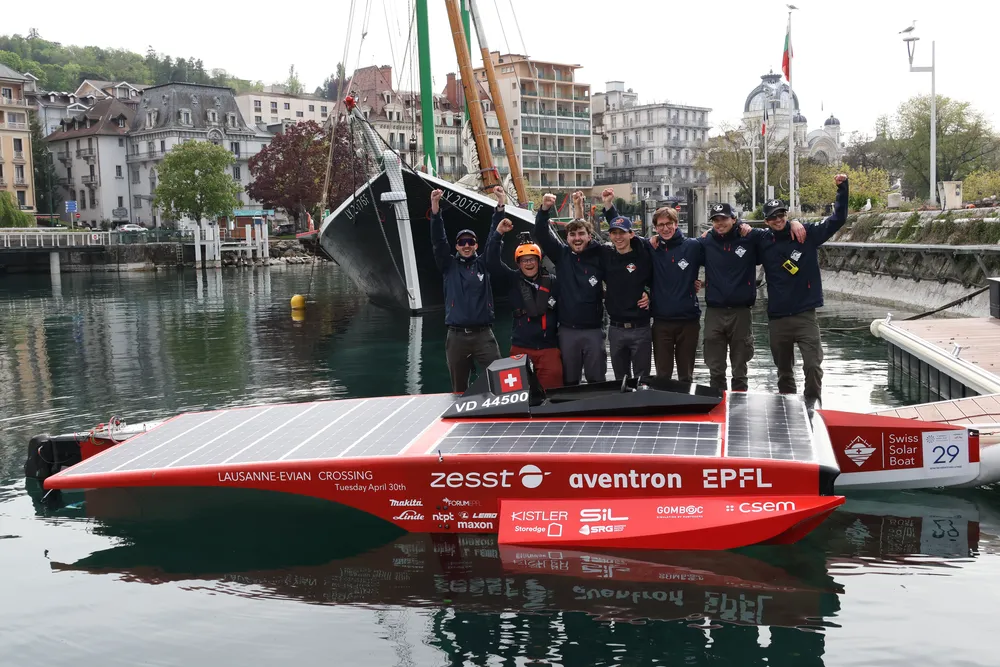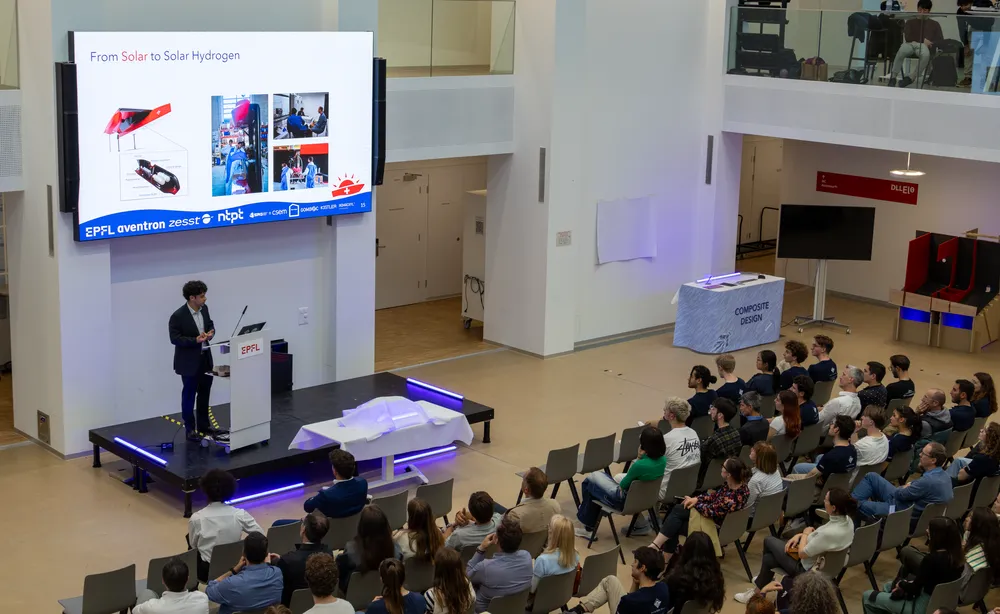The successor to the Dahu developed by EPFL students is in the pipeline. It uses the same solar, hydrogen and electric propulsion technologies as its predecessor.
It’s always magical when a boat flies. It’s even more magical when it has no sails and does so silently. On a lake of oil, the Dahu, a prototype developed by Swiss Solar Boat, an EPFL project, doesn’t go unnoticed. With his head barely above the cockpit, the pilot of this single-seater looks like Professor Tournesol aboard his submarine. This venerable prototype will soon be retiring in style. After two successful participations in the Monaco Boat Show, the Dahu has finally evolved into an electric propulsion system using hydrogen and a fuel cell. Basile Fakhoury, the project’s communications manager, explains: “In its first version, with energy supplied solely by solar panels, we found that the Dahu’s biggest weakness was its range. The idea of turning to a fuel cell running on hydrogen and oxygen to power the engine seemed to us to be the best solution. The whole development challenge consisted in linking systems, batteries and motors, and getting them to work.”
Translémanique to hydrogen
In April 2024, the Dahu achieved a milestone in the history of the Swiss Solar Boat project. It crossed Lake Geneva autonomously between Evian and Lausanne. A bridge between two shores, between two countries, between two technologies. Quite a symbol for a team of some seventy students from Lausanne University. Thirteen kilometers of crossing, thirty minutes of navigation. The aim of this translemanic journey was to demonstrate that the hydrogen vector could be mastered,” recalls Basile Fakhouri. And above all, that it can be beneficial for nautical mobility.”
This symbolic milestone marked a major step forward for the Swiss Solar Boat teams. The project retains its name, even though the share of solar power in propulsion has been reduced to the barest minimum. But the interest in photovoltaic panels remains, since the production of electrical current makes sense when the boat is docked. In a large-scale development, solar power generation can be a real plus,” says Basile Fakhoury. When stationary, the boat can not only produce the electricity it needs, but also feed any surplus into the local grid.”


Focus on passenger transport
In terms of propulsion, the Dahu exposed the limits of solar power and demonstrated the benefits of hydrogen. The next Swiss Solar Boat prototype will be based on this innovative principle. Code name: REF, the Renewable Energy Foiler. EPFL’s new jewel will be a three-seater (one pilot and two passengers) solar-hydrogen hybrid boat on foils. “Why three places? Because we’re moving on to a different vision,” explains the head of communications. We’re looking more towards a possible use in passenger transport. It will always be a prototype, but it’s important to integrate this parameter from the outset of the design to enable possible use on a larger scale in the future.”
For over two years, student minds have been hard at work designing the REF. In May 2024, the first images of the prototype were presented. A stunning look, with a U-shaped ventral foil featuring two bulbs and as many propellers. A unique load-bearing rudder. A front hull covered with photovoltaic panels, to great effect. The first figures have also been put forward for this REF. A range of 150 kilometers. A cruising speed of 25 knots. A top speed of 35 knots. Against the backdrop of these exceptional performances, a participation in the Monaco Boat Show 2026 in a new category: the Sealab. This is a more open category than the solar-powered version of the Dahu,” explains Basile Fakhoury. Three events will be on the program: maneuvers in the harbor, a cruising speed course between ertMonaco and Ventimiglia, and a pure endurance event.”
Until the REF is ready to take on the world’s finest zero-carbon shipping projects, it still has to go through the production phase. It is in the canton of Fribourg, in a hall at the EPFL, that the structural parts are being designed. The hull will be composed of a wooden core and thin layers of carbon. This will avoid the production of a single-use carbon mold with a disastrous energy balance. Assembly of the systems is scheduled for autumn 2024, with the long-awaited launch in 2025. The project is entering its most intense phase,” says Basile Fakhoury. For a year and a half, our teams will be involved, as well as a number of industry players who are helping us to take a highly specialized approach.”
The dedicated budget for these 18 months is in the region of 500,000 to 600,000 francs. Many partners have joined us or are continuing the adventure,” he explains. That said, we’re always on the lookout for additional resources that could enable us to be even more effective. Of course, all the money goes towards production and development, since we’re all students and volunteers.”
For those who appreciate the fragile beauty of a boat that flies in silence.

THIS SPRING. ©RR

TO ATTRACT PARTNERS. ©RR

